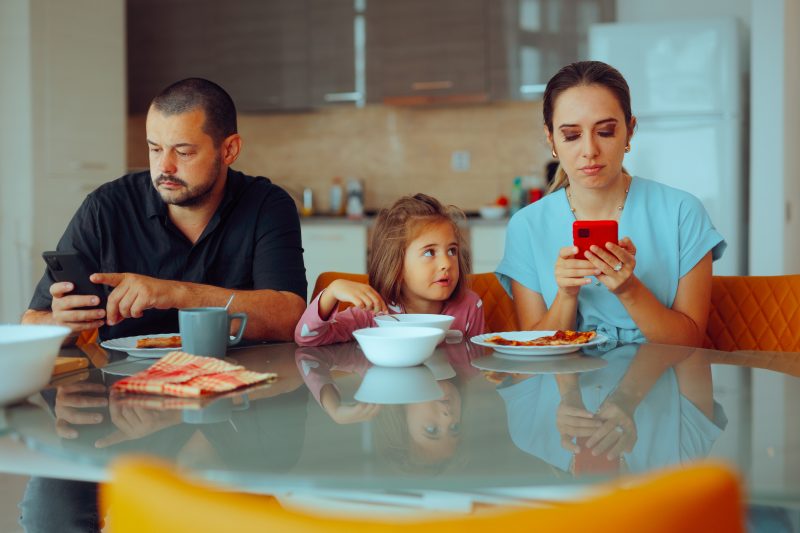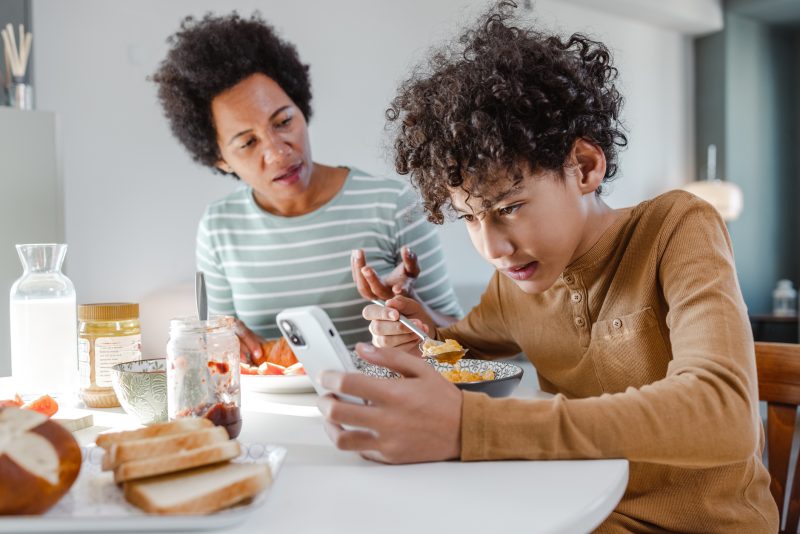
FOMO, or fear of missing out, is a problem that plagues many kids and teens.
With social media filled with highlight reels of friends’ adventures, it’s easy for kids and teens to feel left out – a feeling known as FOMO, or “fear of missing out.” Akron Children’s Pediatric Psychologist Dr. Kelsey Brocker explains how parents can spot the signs of FOMO and help their kids manage it in healthy ways.
Signs your child may have FOMO
The basis of FOMO is fear (or anxiety/stress). Some red flags or signs include:
- Restlessness
- Agitation
- Not able to relax
- Comparing themselves to peers
- Feeling left out socially
- Withdrawal
- Self-isolation
- Frequent checking of social media or phone

Model healthy tech habits in front of your children. Children (from a very early age) watch us and mirror what they see us do.
How to support your child
“Acknowledge that missing out on activities is not easy or fun. This can provide a sense of validation and feeling seen/heard, as opposed to being dismissed and having feelings minimized,” said Dr. Brocker. “But it’s also important to acknowledge that our mind can play tricks on us sometimes and that doesn’t mean those thoughts are true.”
Dr. Brocker said sharing your own stories of FOMO can help normalize the experience for your kids.
“Tell them about a time you missed a ‘fun’ social activity and how you coped with and accepted it,” said Dr. Brocker. “Additionally, remind your child that nobody can attend every event/social engagement.”
Managing social media and tech
Since social media can fuel feelings of FOMO, try having open, ongoing conversations with your child about what they’re seeing online and how it makes them feel.
“Social media is a fabrication of a person’s true life. We see one person’s social media page and compare what we see to our own reality,” said Dr. Brocker.

Since social media can fuel feelings of FOMO, try having open, ongoing conversations with your child about what they’re seeing online and how it makes them feel.
Dr. Brocker also encourages boundaries with tech-free time.
“Having ‘tech free’ nights/days/events could be a great option,” she said. “This is likely to heighten anxiety, initially. However, as your child adapts to creating distance/space from their phone/technology, they will better manage these symptoms and be able to be more mindful and engaged in the present, in-person moments.”
And parents, don’t forget to model your own healthy screen habits.
“Children (from a very early age) watch us and mirror what they see us do. When they engage you, thoughtfully disengage from your phone/screen and give your child your full attention,” said Dr. Brocker.
When FOMO may signal something more
If anxiety, withdrawal or other symptoms persist, it may be an indication of a bigger concern. Any signs that appear chronic and continue beyond shifts in their technology use may suggest a more clinical concern.

Encourage tech-free time and give kids your full attention.
“If your child starts to exhibit difficulty with sleeping, eating, school performance, avoidant behaviors, self-isolation, low energy, self-deprecating statements and/or diminished interest in participating in previously enjoyed activities, it would be beneficial to reach out to your provider,” said Dr. Brocker.
Quick tips for parents
- Validate feelings: Name what you see and acknowledge it’s OK to feel left out.
- Share experiences: Model coping strategies by talking about times you missed events.
- Set tech boundaries: Try tech-free meals, short tech-free windows or a weekly tech-free night.
- Make offline activities fun: Encourage hobbies, sports or family games your child will enjoy.
- Model healthy screen use: Limit your own screen time around your kids, and give them your full attention when they are talking to you.
- Watch for concerning symptoms: Difficulty sleeping, changes in appetite, low energy or withdrawal may signal a need for professional support.
FOMO is a normal part of growing up. With understanding, healthy boundaries and mindful tech habits, kids can learn to manage it and build confidence both online and offline.
Similar stories:
For more support, reach out to an Akron Children’s behavioral health provider.

